Activities for Autistic Teenagers

Unlocking Potential Through Tailored Activities
Autistic teenagers benefit immensely from specially designed activities that foster social skills, emotional regulation, sensory integration, and self-understanding. Providing diverse opportunities for engagement—whether at home, in community settings, or through virtual platforms—helps nurture confidence, independence, and a sense of belonging. This article explores a wide range of activities, therapeutic approaches, resources, and strategies that support autistic teens' development while honoring their unique preferences and needs.
Indoor Activities That Promote Sensory and Skill Development
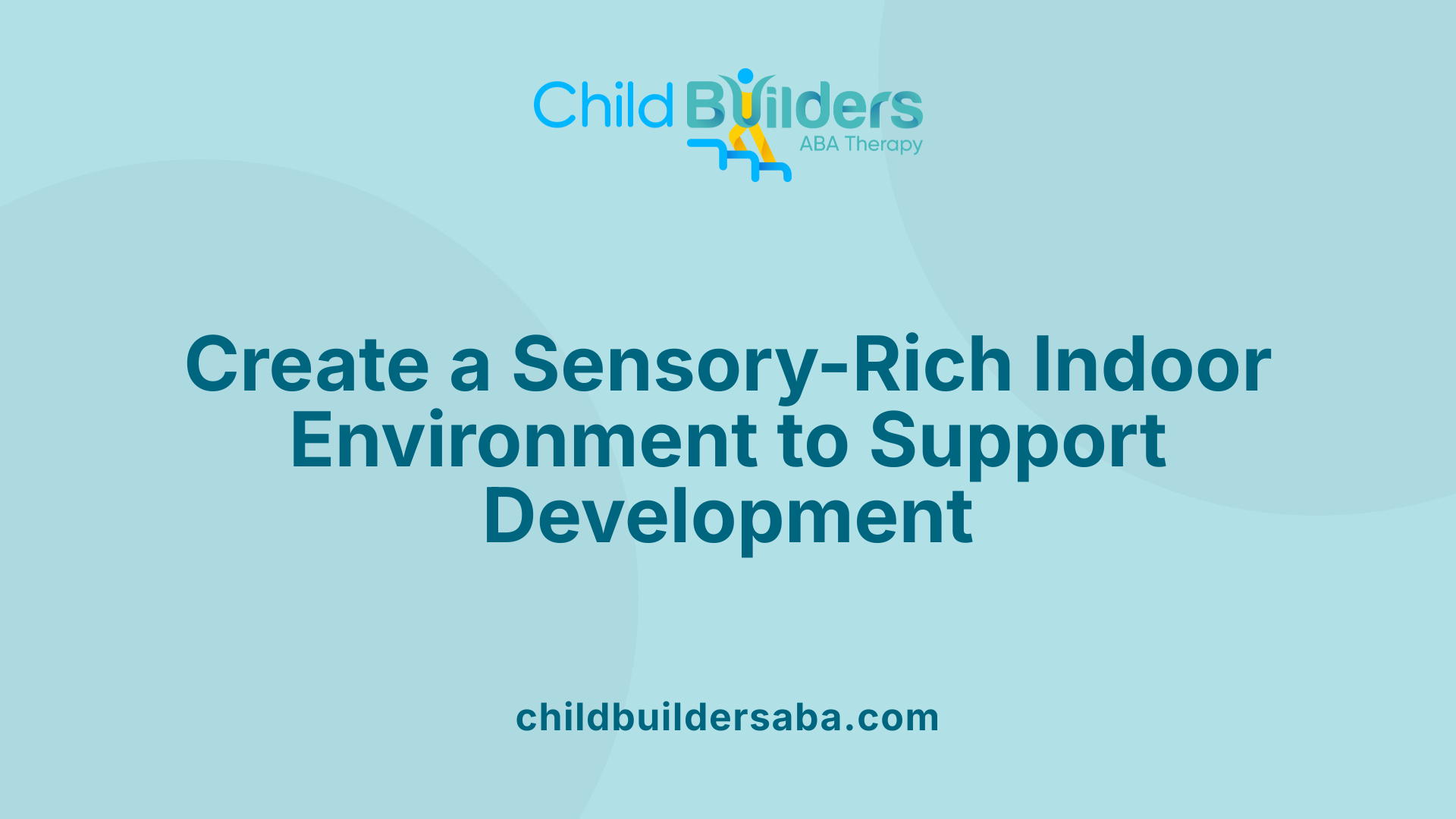
What are some effective indoor activities for autistic children?
Indoor environments offer numerous opportunities to support the sensory and developmental needs of children with autism. Activities rich in sensory input can foster exploration and help develop important skills.
Sensory exploration is central to indoor play. Sensory bins filled with textured materials, water tables, finger paints, and slime experiments allow children to engage their senses and refine tactile skills. These activities not only stimulate sensory processing but also promote fine motor development through grasping, pouring, and manipulating objects.
Movement-based activities are equally valuable. Creating indoor obstacle courses, practicing yoga poses, dancing to music, or engaging in movement games can improve coordination and motor skills. These activities also serve as excellent stress relievers and help children build body awareness.
Pretend play stimulates imagination and social understanding. Building forts, role-playing scenarios like cooking or storekeeping, or engaging in imaginative storytelling encourages creativity and independence. Such activities foster language development and social skills, laying groundwork for more complex interactions.
For calmer moments, seated or quiet activities support emotional regulation. Coloring, using calm-down cards, practicing mindfulness exercises, and utilizing sensory tools like fidget toys can help children self-regulate and manage sensory overload.
Creating a structured routine with choices and familiar activities provides a safe, predictable environment. Gradually incorporating new activities and sensory tools can keep indoor play engaging and supportive, maximizing developmental benefits for children with autism.
Overall, combining sensory-rich activities, movement games, pretend play, and self-regulation tools creates a balanced indoor experience that nurtures growth, enhances skills, and encourages positive emotional well-being.
Engaging Recreational Activities for Teens
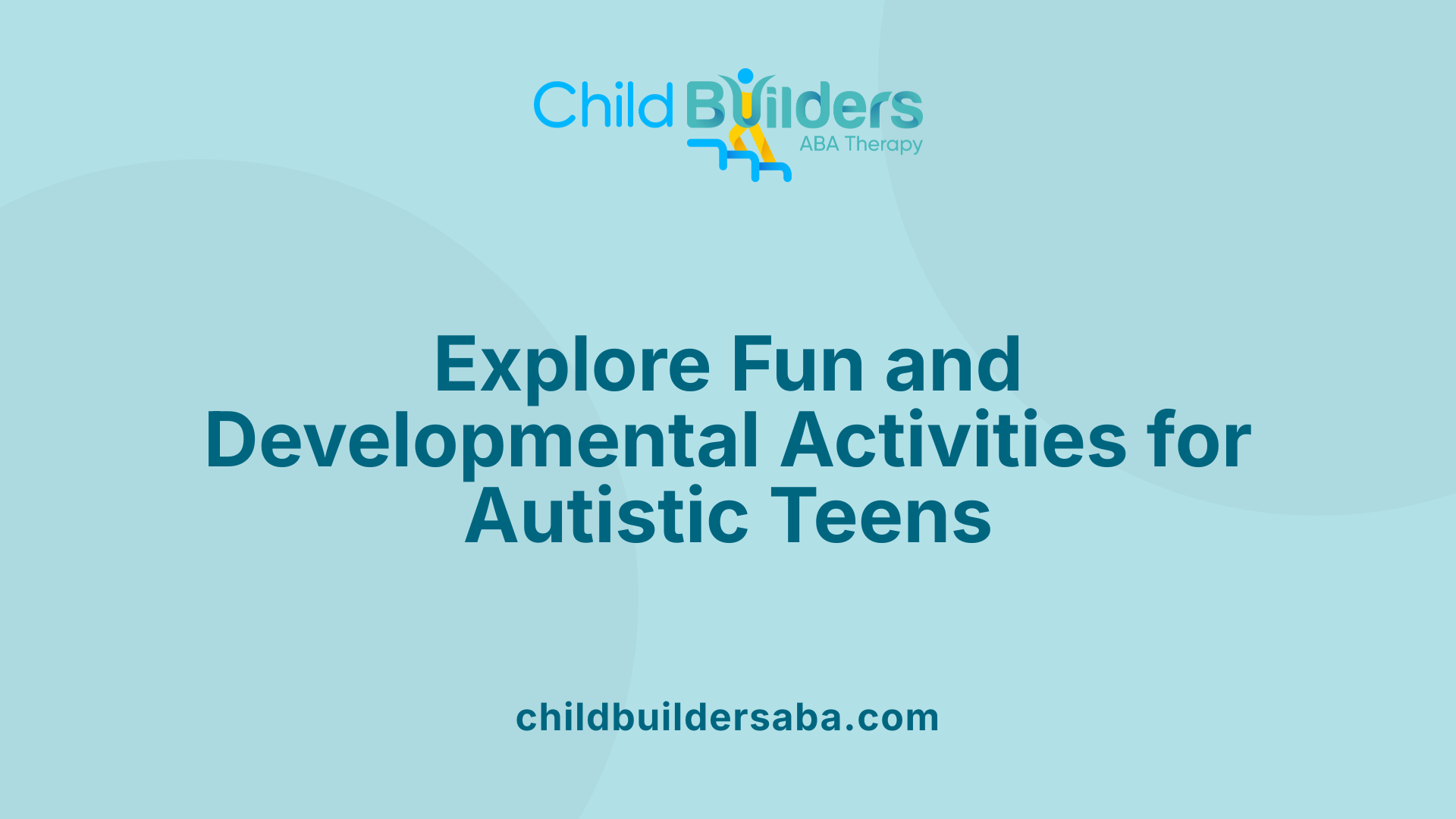
What are some engaging activities for autistic teenagers, such as board games, dancing, or storytelling?
Autistic teenagers can benefit from a wide range of activities designed to match their interests, strengths, and sensory preferences. These activities not only foster development but also provide enjoyment and a sense of accomplishment.
Board games are an excellent choice. They improve social skills, teach rule-following, and promote critical thinking. Games like chess, Uno, or collaborative storytelling board games encourage turn-taking and problem-solving.
Dancing and music activities help boost self-confidence and offer emotional regulation. Participating in dance routines or music therapy sessions can improve mood and foster self-expression.
Storytelling and reading are powerful tools. Tailored books about characters with autism or related themes enhance language skills, imagination, and empathy.
Creative arts such as painting, crafting with clay, or gardening activities promote sensory engagement and relaxation. Arts and crafts allow for emotional expression and fine motor skill development.
Video games can be used thoughtfully to develop logic, creativity, and executive functioning skills. Games like Minecraft, which are predictable and calming, are often preferred.
Outdoor activities and sports play a pivotal role in promoting physical health, motor skills, and social interaction. Organized sports help teach teamwork, cooperation, and build confidence.
For social skills development, engaging in shared interests through clubs, group activities, or virtual groups can create meaningful connections.
Incorporating activities that are tailored to the individual’s preferences and sensory sensitivities ensures that they are both enjoyable and beneficial. Respecting unique interests and allowing space for personal passions can make a significant difference.
Overall, a mix of indoor and outdoor activities, arts, sports, and social engagement provides a balanced approach to supporting the diverse needs of autistic teenagers. This variety helps develop social, emotional, and cognitive skills, promoting overall well-being and independence.
Free and Low-Cost Activities for Self-Guided Engagement
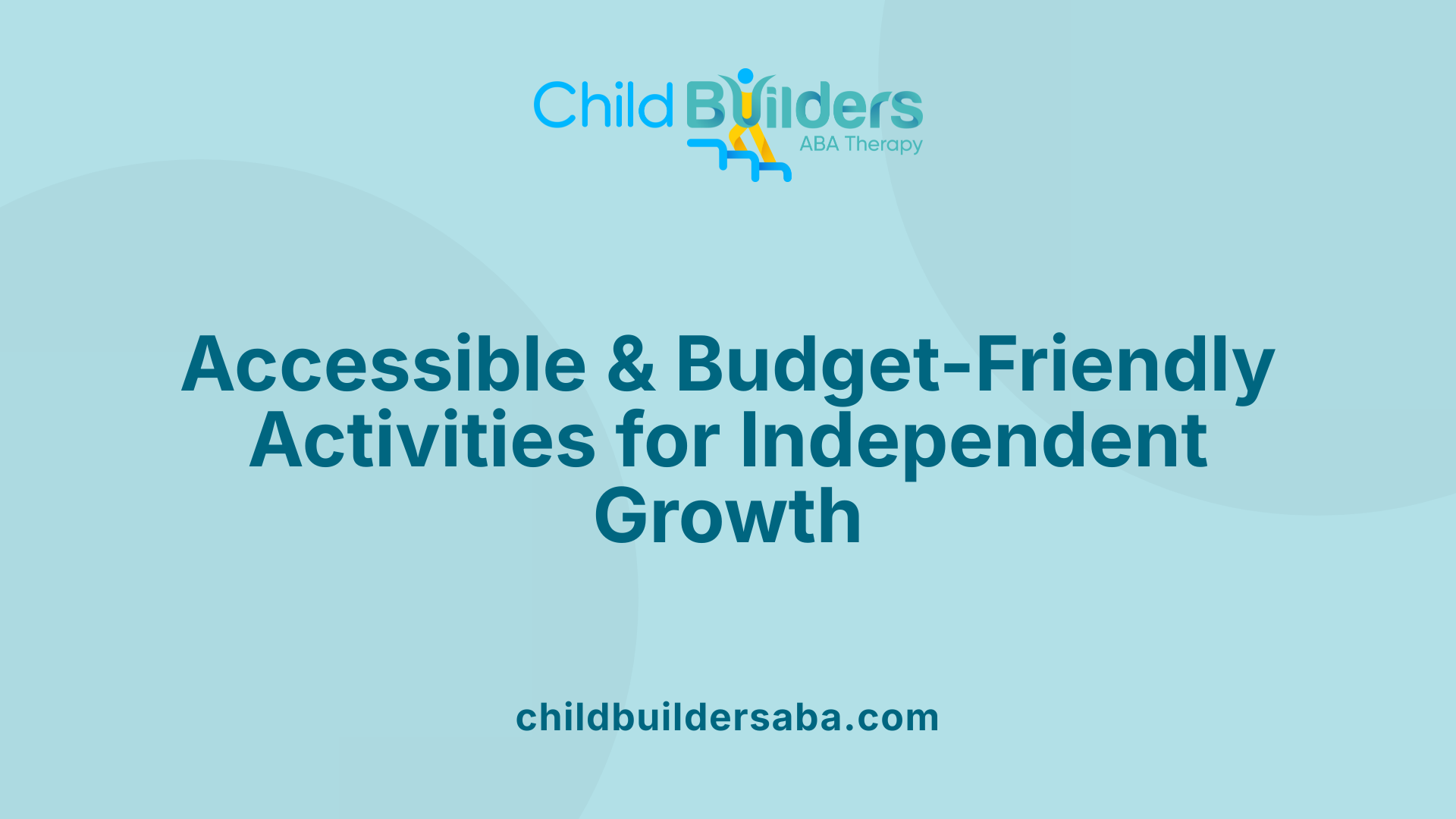 Autistic teenagers can benefit from a variety of activities that promote learning, creativity, sensory regulation, social skills, and outdoor experiences, many of which are accessible at little or no cost.
Autistic teenagers can benefit from a variety of activities that promote learning, creativity, sensory regulation, social skills, and outdoor experiences, many of which are accessible at little or no cost.
Virtual learning offers engaging opportunities such as online educational resources, virtual museum tours, and interactive apps tailored to their interests. These experiences enhance knowledge and curiosity while remaining budget-friendly.
Art and crafts provide excellent outlets for self-expression and fine motor skill development. Activities like drawing, painting, coloring pages, and crafting with materials like clay or beads foster creativity without requiring expensive supplies. Making slime or creating digital art using free apps can also stimulate imagination while supporting sensory needs.
Sensory activities help manage sensory sensitivities and promote calmness. DIY sensory bottles, sensory bins made with household items, and simple stress-relief tools like weighted lap pads or calm-down cards are easy to create at home. These promote self-regulation and focus.
Social skills exercises, including role-playing with emotion cards, sharing time to discuss interests, and playing the Name Game to learn classmates' names, encourage communication and emotional understanding. These activities foster social connection and empathy.
Outdoor exploration is a cost-effective way to provide sensory input and physical activity. Nature walks, visits to parks, or engaging with animals offer calming sensory experiences and help develop social and motor skills. Activities like hiking or exploring local nature reserves are accessible and beneficial.
Incorporating these activities into daily routines can promote emotional well-being, social competence, and sensory regulation. Many of these options require minimal resources, making them suitable for home or community settings, and support autonomous or guided participation.
| Activity Type | Examples | Notes |
|---|---|---|
| Virtual Learning | Online museum tours, free educational apps | Accessible from home; supports curiosity and knowledge |
| Art and Crafts | Drawing, coloring pages, slime making | Fosters creativity and fine motor skills |
| Sensory Activities | DIY sensory bottles, sensory bins | Aids in regulation; simple to create at home |
| Social Skills Exercises | Emotion cards, sharing time, Name Game | Build empathy and communication skills |
| Outdoor Exploration | Nature walks, park visits, animal watching | Encourages physical activity and sensory calmness |
Choosing activities based on personal interests and sensory needs can greatly enhance engagement. These options offer meaningful ways for autistic teens to learn, express, and explore independently or with family, creating a supportive and enriching environment.
Creative Pursuits That Foster Expression and Social Bonds
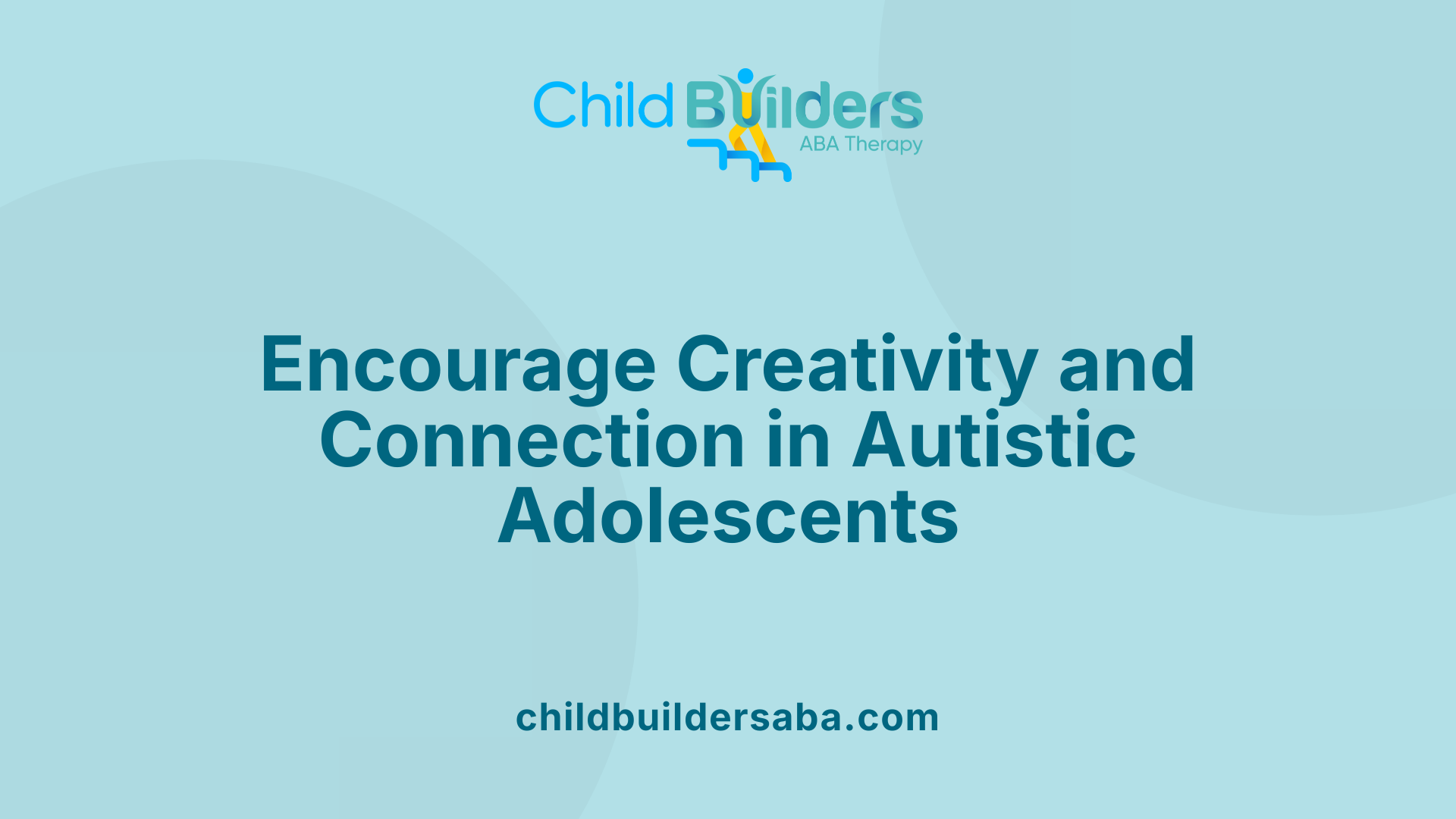
What creative and recreational pursuits are suitable for autistic adolescents?
Autistic teenagers can thrive through a variety of creative and recreational activities that encourage self-expression, boost confidence, and foster social skills. Arts and crafts, such as drawing, painting, and crafting with clay or textiles, offer sensory engagement and develop fine motor skills while allowing personal expression.
Music therapy, including playing instruments, singing, or listening to music, reduces anxiety, improves speech, and promotes emotional regulation. Participating in drama and dance activities helps build confidence, express emotions, and enhance communication skills.
Storytelling activities, whether through spoken narratives, writing, or digital media, stimulate imagination, encourage creativity, and improve language understanding. Outdoor hobbies like gardening, hiking, or water play provide calming sensory experiences and support physical health.
Structured group activities such as clubs, social games, or pet care projects promote teamwork and social interaction. These pursuits should be adapted to each teenager’s interests, sensory sensitivities, and developmental level. Offering support and inclusivity ensures meaningful engagement for autistic adolescents, helping them build crucial life skills while enjoying recreational fun.
Therapies Proven Effective for Autism Support
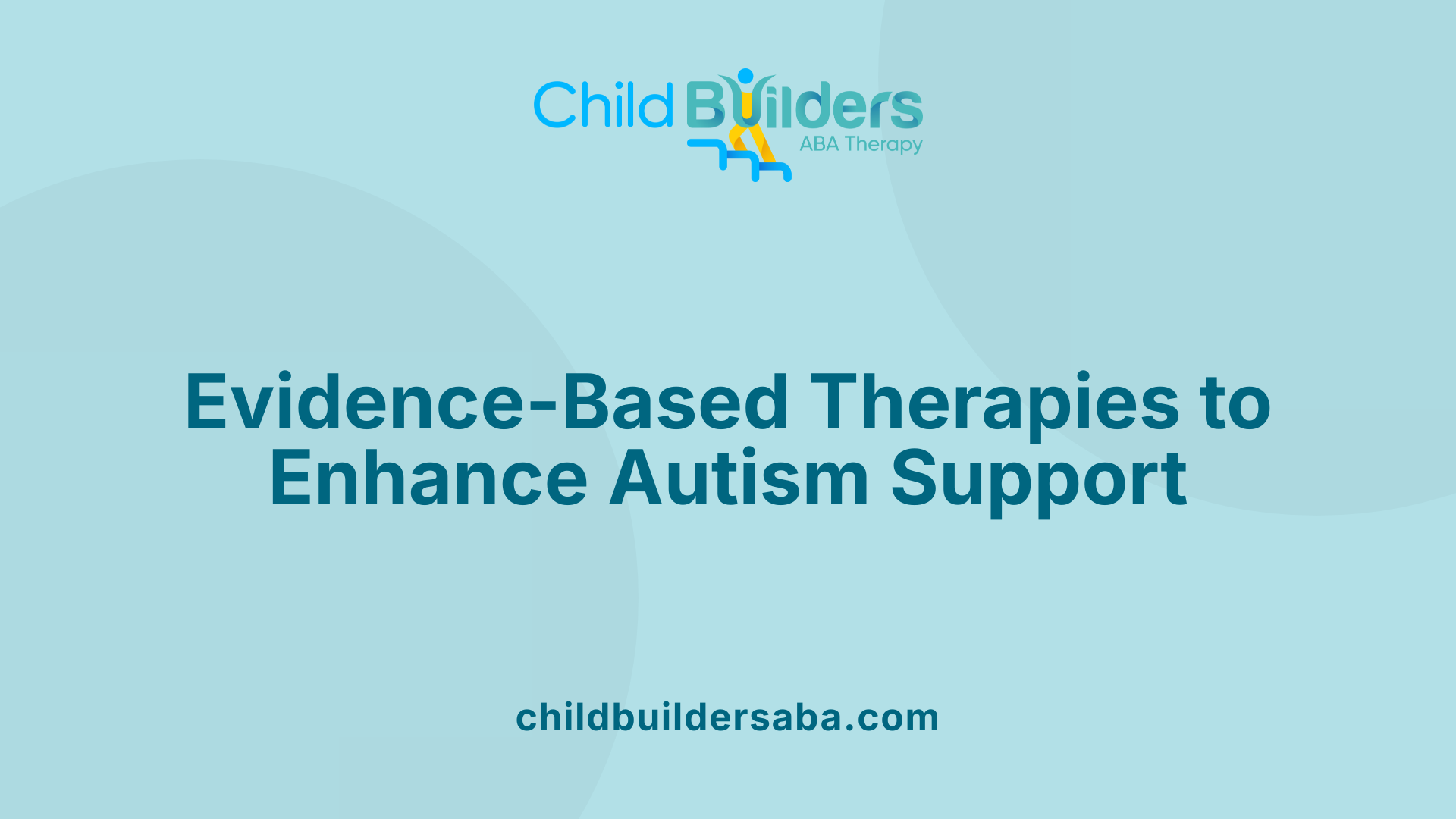
Which therapeutic approaches and therapies are effective for autistic teenagers?
Supporting autistic teenagers requires a multifaceted approach that combines various therapies proven to enhance their development and well-being.
Behavioral interventions, especially applied behavior analysis (ABA), are among the most supported by research. ABA involves teaching specific skills through structured methods such as discrete trial training (DTT) and pivotal response training (PRT). These techniques help improve communication, social behaviors, and daily living skills.
Developmental therapies focus on nurturing foundational skills. Speech and language therapy play a crucial role in improving communication abilities, while occupational therapy (OT) assists in sensory processing and the development of daily living skills. These therapies are tailored to meet each teen’s unique needs.
Social skills training aims to help teenagers navigate social interactions more effectively. Techniques such as social narratives and therapies like the Developmental, Individual Difference, Relationship-based model (DIR) or Floor Time encourage emotional understanding and peer interaction.
Psychological therapies like cognitive-behavior therapy (CBT) are also beneficial. CBT can help manage anxiety, depression, and other mental health issues that often co-occur with autism, by teaching coping strategies and emotional regulation.
While medication is not used to treat core autism symptoms, certain drugs are approved for specific behavioral challenges. For example, risperidone and aripiprazole are prescribed to manage irritability and severe behavioral outbursts.
Combining these therapies based on individual needs provides a comprehensive support system that promotes growth, emotional stability, and better social integration for autistic teenagers.
| Therapy Type | Main Focus | Examples | Additional Benefits |
|---|---|---|---|
| Behavioral | Skill acquisition & behavior modification | ABA, DTT, PRT | Builds foundational skills, reduces problematic behaviors |
| Developmental | Communication & sensory processing | Speech & language therapy, occupational therapy | Enhances daily functioning, sensory integration |
| Social Skills | Peer interaction & emotional understanding | Social narratives, DIR, Floor Time | Improves socialization and emotional growth |
| Psychological | Mental health & emotional regulation | CBT | Manages anxiety, depression, emotional challenges |
| Medication | Symptom management | Risperidone, aripiprazole | Reduces irritability and aggression |
Understanding and applying these strategies can significantly enhance the quality of life and developmental trajectory for autistic teenagers.
Resources to Empower and Educate
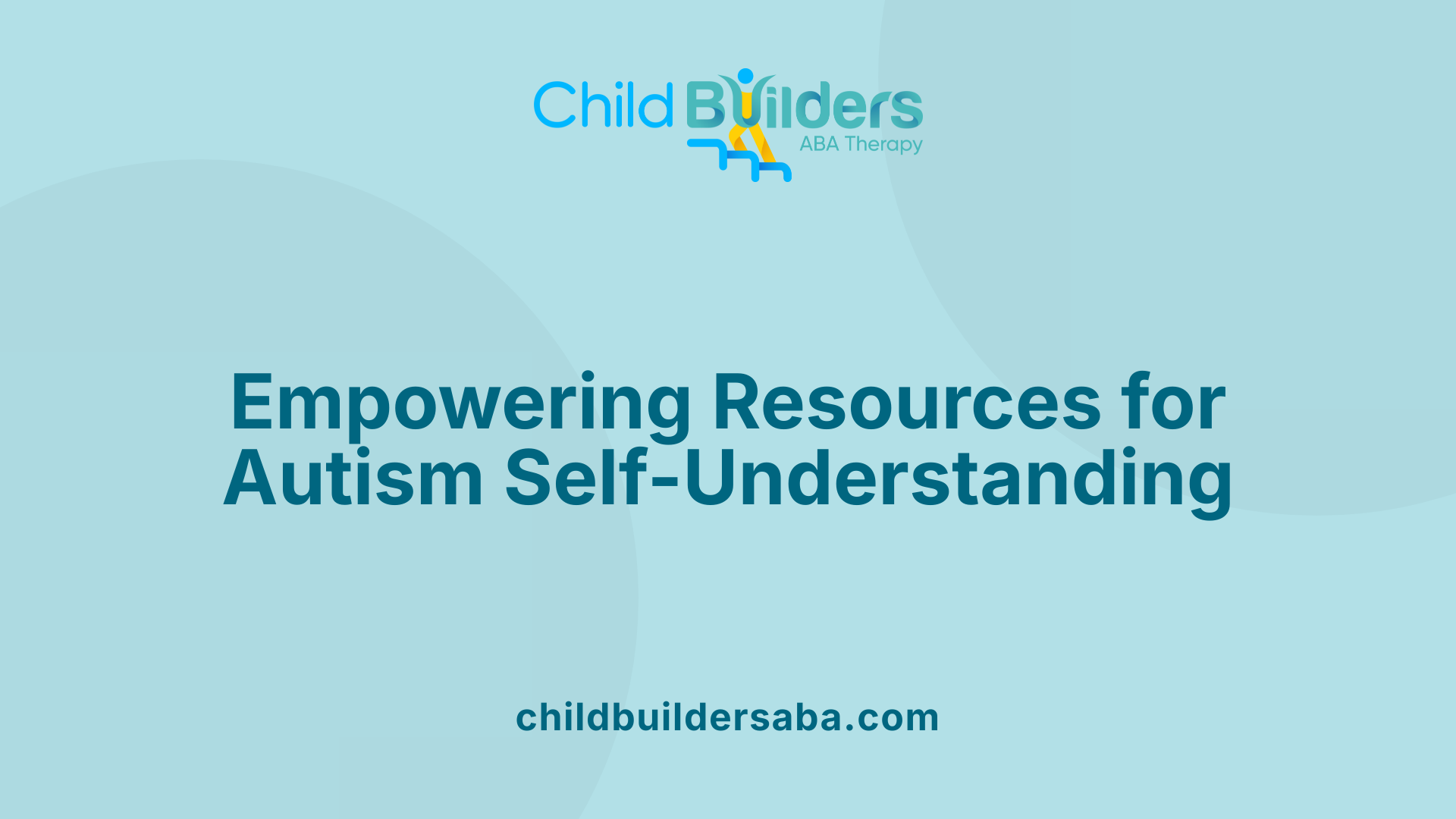 Understanding and supporting autistic teenagers requires access to a variety of tailored resources and guides aimed at fostering self-awareness, social skills, and emotional regulation.
Understanding and supporting autistic teenagers requires access to a variety of tailored resources and guides aimed at fostering self-awareness, social skills, and emotional regulation.
One prominent resource is the "Know Yourself" series, which offers free and comprehensive materials created by autistic individuals. This series includes videos, PDFs, worksheets, and interactive profiles designed to help teens understand their autism, explore their identities, and build independence. It covers important topics such as managing energy levels, setting personal goals, understanding others, and preparing for transitions.
Visual aids play a crucial role in effective communication and learning. Tools like social stories and visual schedules support autism learners who are visual thinkers by presenting concepts in an accessible, predictable manner. These can include picture-based stories that model appropriate social behaviors and daily routine charts to foster routine and comfort.
Support guides and online platforms also offer extensive information. Websites provide resources such as emotion cards, sensory activity ideas (like using fidget toys or making slime), and calming techniques that help teens self-regulate emotionally and sensory-wise. These tools not only assist in managing stress but also promote social and emotional growth.
Moreover, engaging activities—such as role-playing exercises, board games, and outdoor adventures—are recommended to enhance interaction and understanding among peers. Therapy-oriented activities including art, music, and outdoor pursuits are highly beneficial, fostering self-expression, emotional expression, and practical skills.
For further assistance, online communities and educational platforms offer tailored strategies and peer support. They serve as valuable sources for families, educators, and caregivers seeking to create inclusive, enriching environments that empower autistic teens.
In summary, a combination of curated series, visual tools, sensory activities, and supportive community resources can significantly enhance the engagement, understanding, and well-being of autistic teenagers, guiding them toward greater independence and self-acceptance.
Supporting Education and Social Understanding for Caregivers and Educators
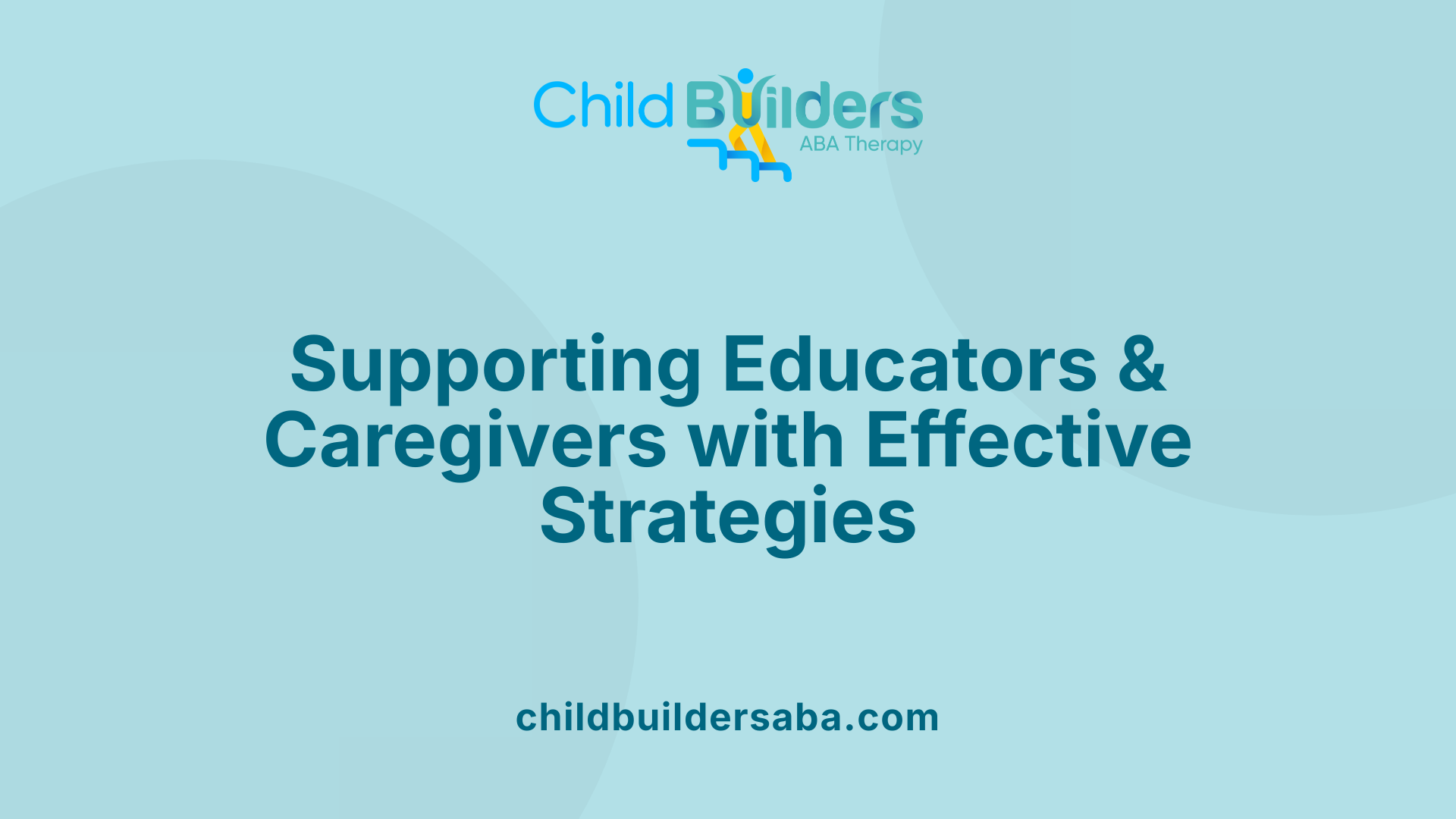
What educational content can help caregivers and educators support autistic teenagers through activities?
Providing the right educational content is essential for supporting autistic teenagers in learning and social interactions. Practical strategies include the use of visual supports like schedules, social stories, and visual aids. These tools help make routines clear, reduce anxiety, and improve understanding of daily tasks.
Evidence-based teaching methods play a significant role. For instance, the TEACCH model emphasizes structured environments and visual cues, while programs like Incredible Years focus on social and emotional skills. Manuals and guides that include visual aids can give caregivers and teachers step-by-step instructions, ensuring consistent and effective support.
Sensory supports are equally important. Sensory bins, fidget toys, noise-canceling headphones, and calming activities like mindfulness exercises help manage sensory overload, promoting emotional regulation.
In addition, activities tailored to teens’ interests—such as art, music, outdoor exploration, and technological games—boost engagement and encourage social interaction.
Organizations such as Autism Speaks and the CDC provide a wealth of free resources, including printables, visual supports, and online activities. These resources are tailored to foster learning, emotional regulation, and social skills, helping caregivers and educators create inclusive environments for autistic adolescents.
| Topic | Tools & Resources | Benefits |
|---|---|---|
| Visual Supports | Schedules, social stories, visual aids | Reduce anxiety, improve routine understanding |
| Structured Routines | TEACCH strategies, clear activity plans | Provide predictability, support independence |
| Sensory Supports | Fidget toys, sensory bins, noise-canceling headphones | Manage sensory overload, calm emotional responses |
| Evidence-based Methods | Incredible Years, visual manuals | Enhance social skills, emotional learning |
| Inclusive Activities | Art, music, outdoor, tech-based games | Increase engagement, social interaction, creativity |
Supporting autistic teenagers involves an integrated approach that combines evidence-based practices, sensory supports, and engaging activities. Tailoring these resources to individual needs ensures a more successful and inclusive learning experience.
Activities and Strategies for High-Functioning Autism
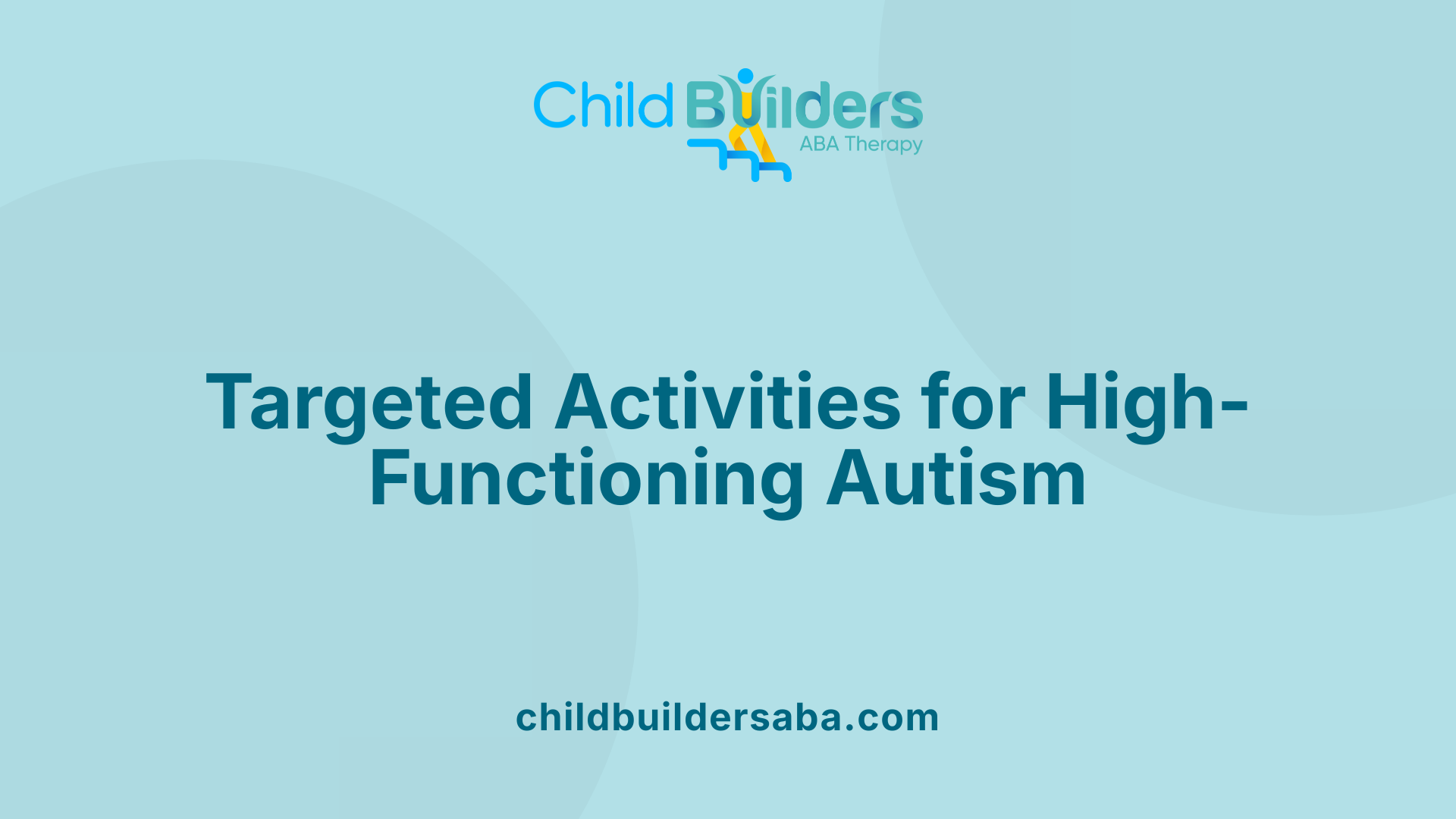
What therapeutic activities are recommended for high-functioning autism?
For teenagers with high-functioning autism, a variety of activities can promote social, emotional, and sensory development. Social skills training is essential and can include role-playing scenarios, social stories, and structured activities like sharing time, which encourage understanding others' perspectives and foster empathy.
Visual tools are highly effective in supporting emotional awareness and teaching routines. Using emotion cards helps children recognize and label different feelings, both in themselves and others. Visual schedules outline daily activities, providing predictability and reducing anxiety.
Managing sensory sensitivities is crucial. Fidget toys, sensory bins filled with textured objects, noise-canceling headphones, and calm visual activities help children self-regulate and stay focused. Creative interventions like art, music, and technology-based social skills apps also serve as engaging ways to develop communication skills and manage emotional responses.
Cognitive-behavioral therapy (CBT) and dialectical behavior therapy (DBT) are proven to assist with anxiety and emotional regulation in high-functioning teens. Tailoring these therapies to individual interests and strengths enhances their effectiveness.
Activities incorporating interests such as virtual tours, making slime, or digital art projects foster both learning and enjoyment. These approaches not only promote skill development but also encourage confidence and independence.
| Activity Type | Description | Benefits |
|---|---|---|
| Social skills training | Role-playing, social stories, sharing activities | Promote empathy, communication, and social understanding |
| Visual aids | Emotion cards, visual schedules | Aid emotional recognition, provide routine clarity |
| Sensory management | Fidget toys, sensory bins, noise-canceling headsets | Enhance sensory regulation and focus |
| Creative engagement | Art, music, technology apps | Encourage self-expression and engagement |
| Cognitive-behavioral strategies | CBT, DBT sessions | Address anxiety, improve emotional resilience |
Implementing a combination of these activities, tailored to each teen's individual preferences and sensitivities, creates a supportive environment conducive to growth and learning.
Enhancing Social Skills Through Structured and Fun Activities
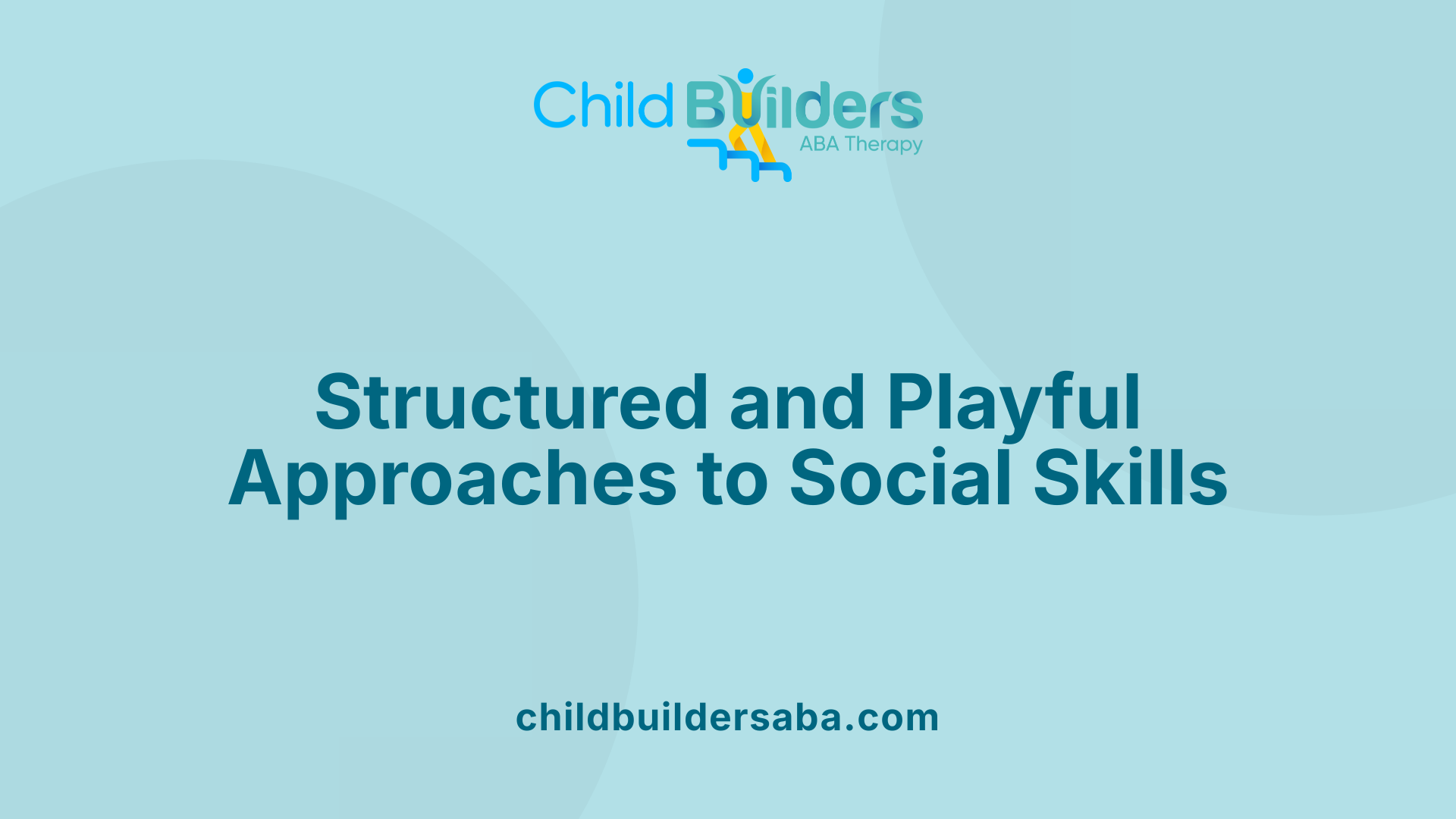 Supporting social skills development in autistic teenagers can be both effective and enjoyable when using a variety of activities and strategies. Structured group programs, such as social skills training sessions and specialized programs like PEERS, focus on teaching practical skills through role-playing and real-world practice. These approaches help teens learn to navigate social situations with confidence.
Supporting social skills development in autistic teenagers can be both effective and enjoyable when using a variety of activities and strategies. Structured group programs, such as social skills training sessions and specialized programs like PEERS, focus on teaching practical skills through role-playing and real-world practice. These approaches help teens learn to navigate social situations with confidence.
Incorporating engaging activities like social skills games — including Simon Says, Charades, and Feelings Bingo — encourages interaction, communication, and emotional recognition in a playful setting. Visual supports, such as emotion cards and pictorial schedules, help clarify social cues and promote understanding.
An essential part of successful social skills development involves parental involvement. Parents can reinforce learned skills at home by coaching and providing consistent encouragement. Using teens' personal interests within activities fosters motivation and makes social learning more relatable.
Tailoring activities to each teen’s unique preferences, needs, and responses ensures better engagement and progress. Patience and creativity are vital, as these qualities help foster meaningful growth in social interactions, helping autistic teenagers build lasting social connections.
Sensory Activities Tailored for Autistic Teens
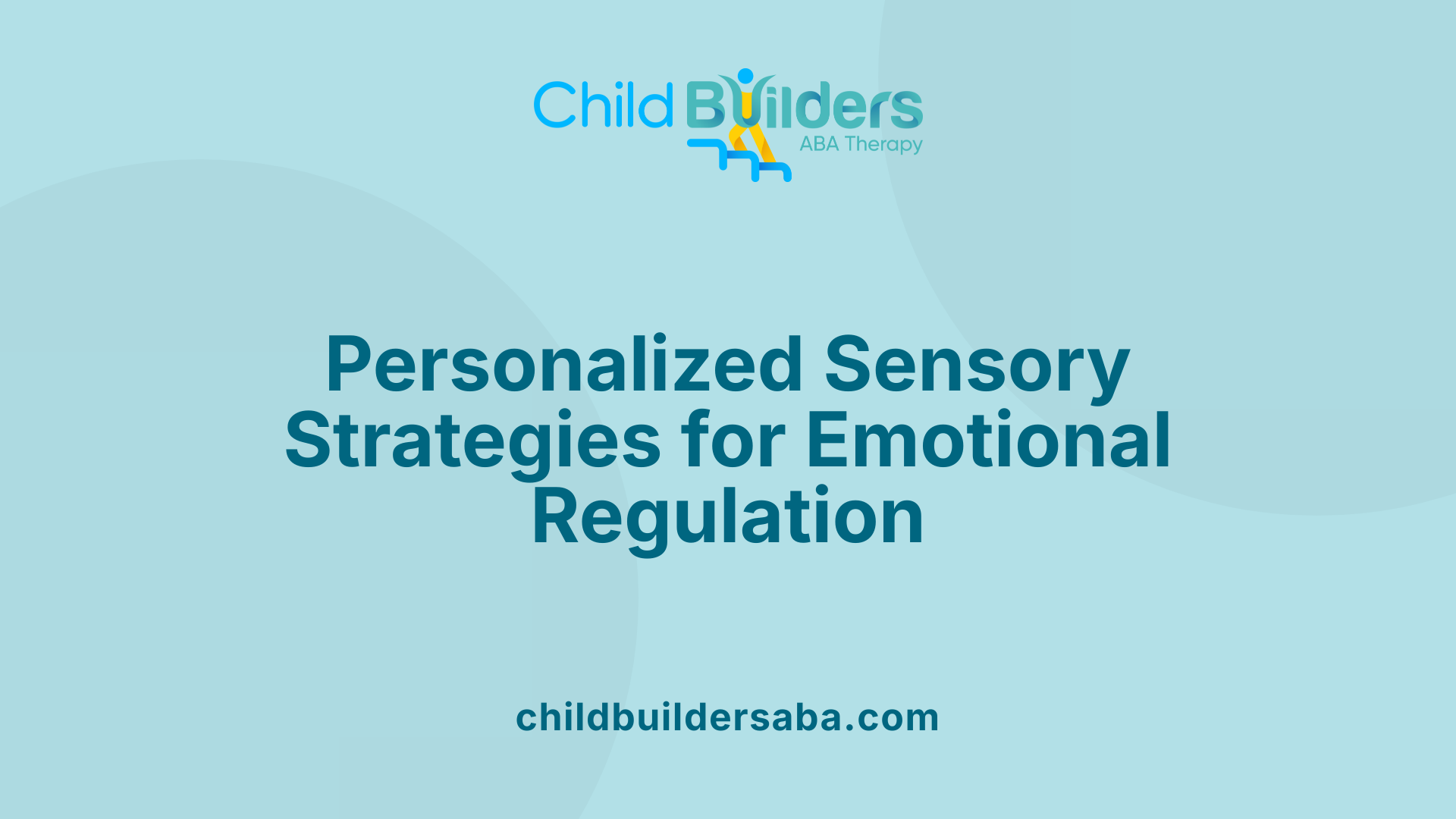
What sensory activities and strategies can be tailored for autistic teenagers?
Customizing sensory activities for autistic teens begins with understanding their unique sensory preferences and sensitivities. This involves conducting sensory assessments to identify which stimuli are comforting and which may cause distress.
One effective approach is incorporating sensory circuits—structured sequences of activities designed to engage different senses and promote regulation. These might include swinging, jumping on a trampoline, or using textured items, combined with calming techniques.
Creating sensory-friendly environments is equally important. Soft lighting, noise-canceling headphones, and quiet spaces serve as calming zones where teens can self-regulate during sensory overloads.
Personalized sensory diets—custom plans that include specific activities and tools such as weighted blankets, fidget toys, or vestibular activities—help maintain sensory comfort throughout the day.
Engagement in sensory-rich activities like gardening, music therapy, or cooking fosters emotional balance, social skills, and independence. Integrating these tailored strategies supports teens in managing sensory challenges while encouraging growth and self-confidence.
At-Home and Virtual Activities to Enhance and Support Development
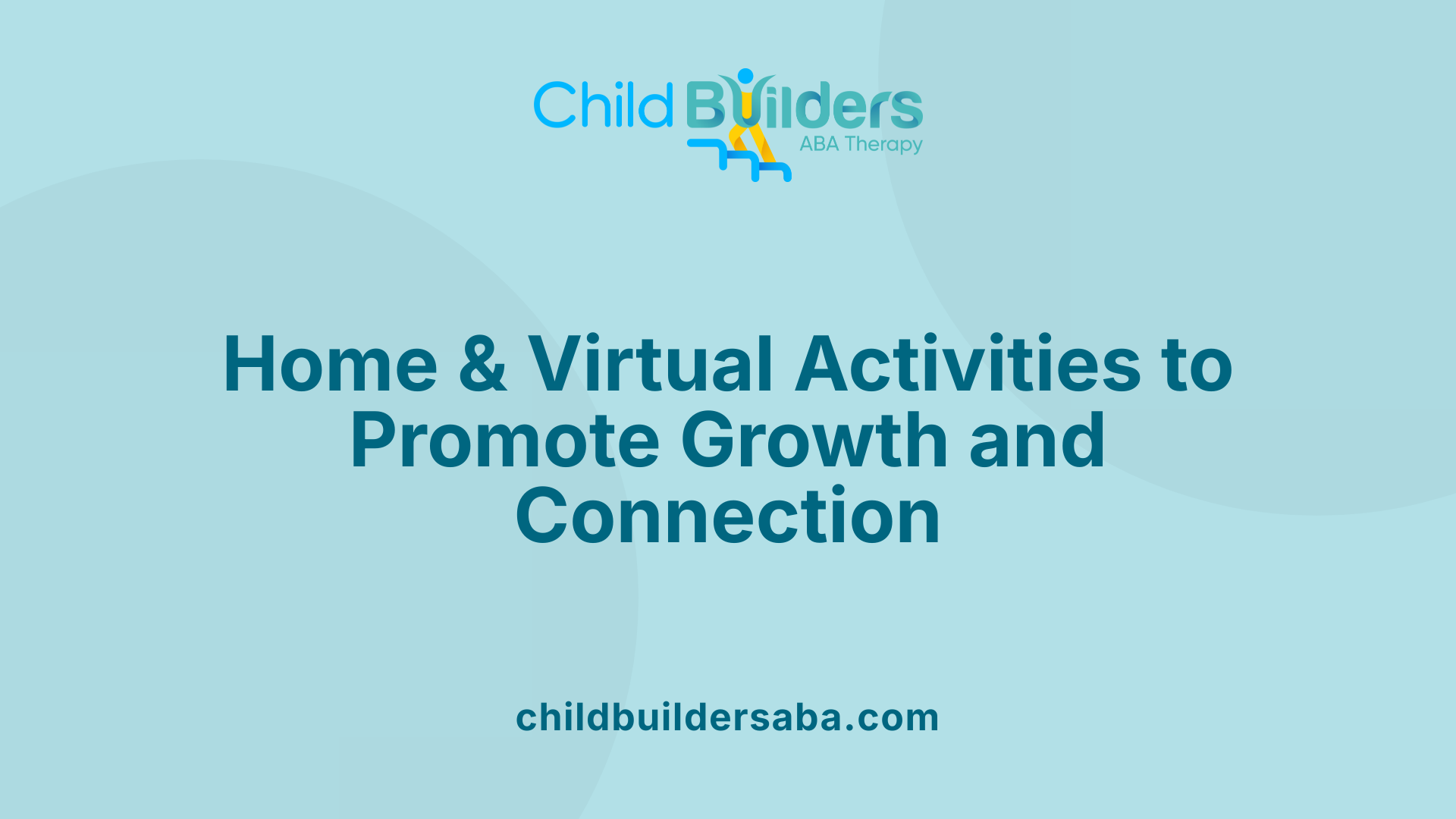
How can communication be improved with autistic teens?
Effective communication with autistic teenagers involves understanding and respecting their individual ways of expressing themselves. Whether they communicate verbally or through gestures, pictures, or other means, patience is crucial. Creating a safe environment where they feel comfortable sharing their thoughts helps foster connection.
Engaging in their interests, asking clear and direct questions, and practicing active listening encourage more open dialogue. Supporting their emotional expression by allowing them to showcase their feelings without interruption builds trust and understanding.
Emotional awareness is also important. Offering affection, respecting personal space, and recognizing their sensory sensitivities prevent misunderstandings and reduce stress. Implementing calming strategies, such as sensory tools or mindfulness exercises, contributes to a more relaxed environment.
In addition, establishing routines and using visual supports, like schedules or emotion cards, can make communication clearer. Resources tailored for autism help teens understand themselves better and improve how they interact with others. Overall, creating a positive, supportive atmosphere encourages meaningful conversations and stronger relationships.
Incorporating structured routines
Structured routines provide predictability, which is comforting for many autistic teens. Visual schedules for daily activities, such as morning routines, homework, and leisure time, help reduce anxiety and foster independence.
Activities like digital art, sensory play, and virtual museum tours enable them to explore interests in a calm, controlled setting. These can be integrated into daily schedules to promote engagement.
Using interactive games
Interactive games—whether board games, puzzles, or digital apps—stimulate cognitive skills, problem-solving, and social interaction. Games designed for multiple players encourage turn-taking, cooperation, and communication.
Popular choices like storytelling activities and the 'What Would You Do?' game promote empathy and perspective-taking. Creating opportunities for group play enhances social skills and builds confidence.
Sensory and calming techniques
Sensory activities such as sensory bins, calming music, and mindfulness exercises help regulate emotions and sensory sensitivities. Fidget toys, noise-canceling headphones, and weighted blankets support self-regulation.
Activities like coloring, making slime, or using sensory bottles provide tactile engagement and can serve as relaxing outlets during stressful moments.
Outdoor activities
Nature walks, gardening, and physical play strengthen motor skills, promote physical health, and have calming effects. Exploring outdoor environments offers sensory experiences through sights, sounds, and smells.
Team sports and outdoor games help develop social skills, teamwork, and confidence. These activities also encourage independence and a connection with nature.
| Activity Type | Examples | Benefits |
|---|---|---|
| Structured routines | Visual schedules, daily planners | Reduce anxiety, promote independence |
| Interactive games | Puzzles, storytelling, group games | Enhance social skills, cognitive development |
| Sensory/calming techniques | Sensory bins, mindfulness, noise-canceling headphones | Emotional regulation, sensory processing |
| Outdoor activities | Gardening, hiking, sports | Physical health, social skills, relaxation |
Engaging in a variety of tailored activities fosters emotional well-being, develops social skills, and enhances overall growth. By blending structured routines, interactive play, sensory regulation, and outdoor exploration, caregivers can support autistic teens in reaching their full potential.
Supporting a Bright Future with Tailored Activities
Engaging autistic teenagers in meaningful activities that match their interests and sensory needs can significantly enhance their social skills, emotional regulation, and overall well-being. Whether through indoor play, outdoor adventures, virtual learning, or community participation, a personalized approach fosters confidence, independence, and a sense of belonging. Using a combination of therapeutic strategies, accessible resources, and supportive environments ensures that autistic teens are equipped to explore their identities and build fulfilling lives. As awareness and inclusive practices continue to grow, so too does the potential for these teenagers to thrive in every aspect of their development.
References
- 13 Activities For Teenagers With Autism - Forta Health
- 24 Classroom Activities for Kids with Autism | Waterford.org
- Resources for autistic teenagers
- Virtual interactive autism activities
- Fun and Creative Activities for Autistic Teenagers
- Social and recreational activities for autistic pre-teens and teenagers
- 10 Brilliant Sensory Activities for Autistic Teenagers
- Activities for Teens with Autism: The Ultimate Guide
- Engaging Autistic Teenager Activities for Social Skills and Fun





.jpg)































































































